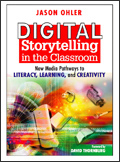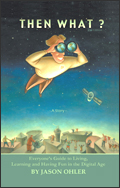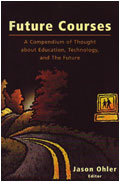[subTechst publishes a column 3 times/year. Feel free to republish it in any venue you wish. Contact jason (jasonohler@gmail.com) for more info.]Suddenly everyone’s favorite color is green. Not the color of money and envy but of their antithesis – environmental embarrassment. We are slowly awakening from our high technology revolution the way we do from an engaging movie, shedding our suspended disbelief to rediscover the world around us. What we see is that our relentless push for change has come with a price tag, namely the generation of a mortifying amount of computer generated landfill.
Much of today’s green concern about computing focuses on energy conservation and more efficient, earth friendly ways to discard yesterday’s model. But almost none of it focuses on a lifestyle change we have quietly embraced that expects us to upgrade every two years. After all, our throw-away culture is also our economic engine, unrelenting in its desire to make room for the new at the expense of the previous. It is built upon faster, lighter, cheaper…always with a shorter half-life.
The result is that we are generating piles of old gear that has no reasonable expectation of use beyond its very short life cycle. If you are 40 you have probably already had and discarded at least a half dozen computers, not to mention numerous television sets and other now quaint digital memorabilia. Sure, you gave your last laptop to your niece, who will no doubt get a few year’s use of it. But eventually not even the indigent will take it because it is, basically, useless.
Operation Seek and DiscardI got to see this first hand recently when I volunteered to head up Operation Seek and Discard. Our mission was to search every nook and cranny in my University of Alaska office building for defunct technology that was resting in some out-of-sight-out-of-mind place. For one week, myself and a brave cadre of colleagues spelunked under desks, in closets, in filing cabinets long ago locked, and managed to scare up enough obsolete tech to sink a mainframe. It turns out that a lot of the defunct gear was hiding in plain sight on people’s shelves and desks. We had just learned to ignore it, the way we had learned to ignore the water cooler that hadn’t been filled in years.
At the end of the week, the dispossessed pieces of tech were gathered in a pile in the center of a large room, forming a collage of hulking desktop computers, low resolution cameras, VHS players and a mishmash of cords and cables that held it all together the way spaghetti holds together a fine Italian meal. People would come by and stare before shaking their heads and saying, “Remember when we would sell our own kids for one of those things,” pointing to a color printer the size of a small refrigerator. “Now we can’t give them away.” Alas, we can’t give our kids away either.
As I stared at all the obsolete tech silently huddled together doing the dance of the digitally dead I felt a mixture of guilt, sadness and denial. After all, I was one of the digitally hopeful who helped convince the forces of the industrial age to walk out on to the leading edge, only to watch the edge sprint away from us at gigaspeeds. The pursuit of staying current quickly became inevitable but impossible. This mess was my mess.
A New Kind of ObsolescenceSo much of this comes as a surprise because the digital age has so drastically redefined the concept of obsolescence. Cars with seized engines and rusted out frames are still good for parts. In fact, we have junkyards dedicated to their utility. But that isn’t how the digital age works. Most of the stuff we had to get rid of in Operation Seek and Discard worked just fine. The only problem with it is that it was… sloooowwww. And because it was slow, it had become incompatible with the faster technology everyone else was using.
The good news for our institution was that it did a good job of wringing every last drop out of technology that the public would allow. After all, the public will be the first to criticize an educational institution running last year’s gear. But the bad news is also the good news. Despite anyone’s best efforts, the digital age seems destined to generate landfill by the truckload. This could change. If the public demanded laptops made out of spare parts and recycled cardboard I am sure the engineering community could rise to the challenge. But I don’t see that happening soon. And it’s not just institutions that make a mess – we do it too. We wouldn’t dream of making our kids use slow computers running yesterday’s operating system. It’s the digital age equivalent of not feeding our children.
At the end of the Operation Seek and Discard I had created two piles. The first was stuff that we would either melt down for scrap, donate to the local gun club for target practice or ship off to state surplus. That is, anything that was over three years old. The second much smaller pile consisted of stuff we might actually use. While much of pile two was on the cusp of obsolescence, there was one piece of technology that had been around for 30 years and still had another 30 years left in it: the upright Royal vacuum cleaner. The custodian claimed that.
What's Next?What do we make of all this? Surely schools can’t live with yesterday’s processor speeds. It’s downright irresponsible. And they can’t continue to force students to stare at fuzzy screens. That’s inhumane. So we wait for some social movement, some enterprising green company, some funded mandate from the government that will make green computing truly possible. When it comes perhaps it will allow us to at least reuse our computer casings, inserting new innards as they become available. Perhaps it will entail a new approach to creating computers that makes their constituent parts truly recoverable and useful. Or maybe it will drive us to create computers that are comprised of so little that it won’t matter.
But in the meantime, we live with our mess, teaching the science of ecology as a game of catch-up in a world that is exploding with efforts to turn third world nations into first world competitors, complete with the purchasing power that entails. And while we wait for the other shoe drop in many countries embracing a digital lifestyle, we approach our own future like we do the federal deficit, once again passing the buck on to our children.








